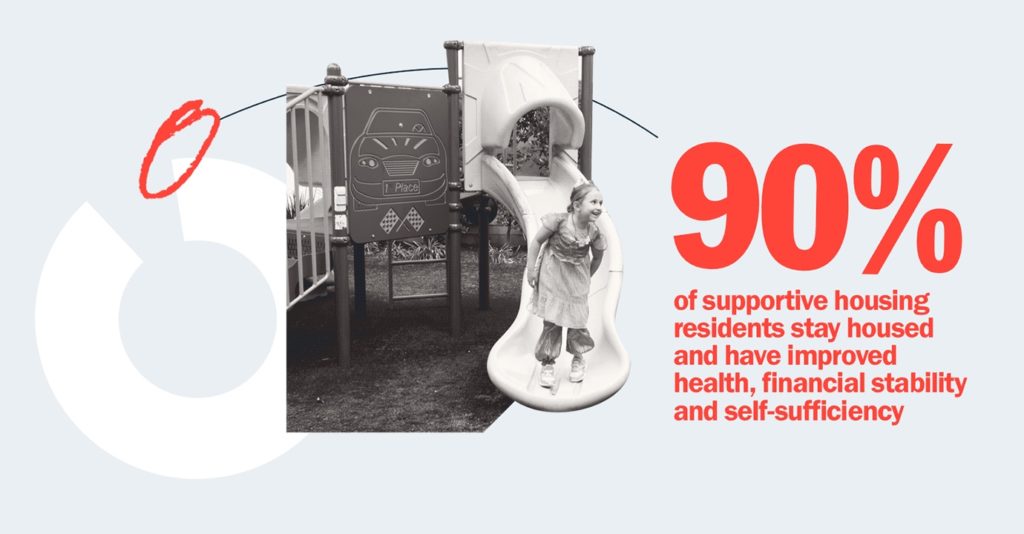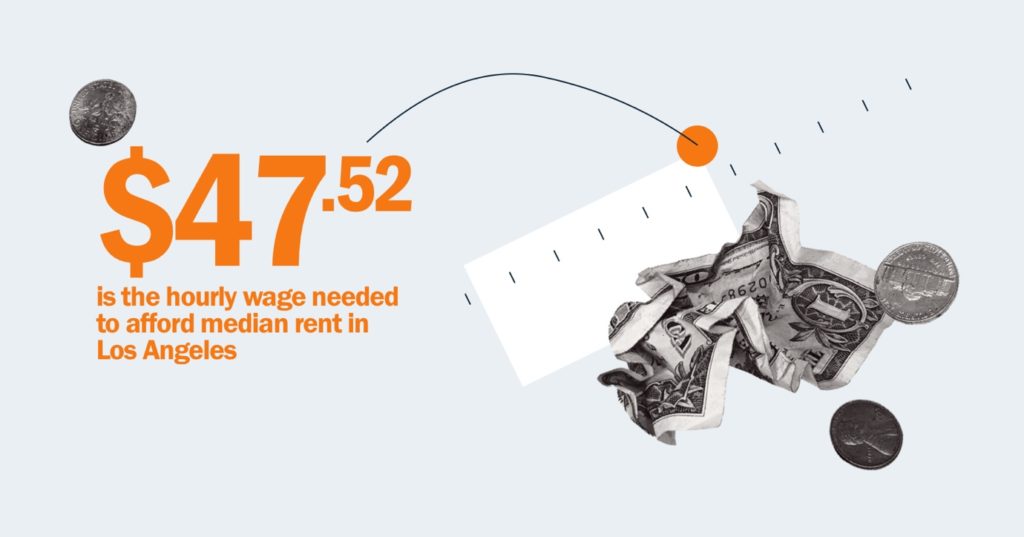How we end homelessness

There are many factors that cause homelessness, but the primary reason is this: a lack of housing people can afford. The good news is that we finally have a plan to solve it—based on proven solutions and backed by dedicated public funding.
Due in large part to policies which slashed critical social safety nets and deprioritized the creation of new subsidized housing, L.A. County is in the midst of a critical affordable housing shortage.
However, a string of critical bills including SB 679 that created the Los Angeles County Affordable Housing Solutions Agency (LACAHSA), Measure H, AB 2011, AB 1991, and Proposition HHH have put us on track to begin to close that gap. Between 2016 and 2021 alone, over 26,000 new affordable units were added–a far cry from previous years.
These homes are helping thousands of people transition out of homelessness and into stability, but thousands of others are still waiting for a place to call their own.

One estimate states California needs to create more than 112,527 units of affordable housing to meet the current need. This is by far the most important step in solving our homelessness crisis for good.
Without available affordable and supportive housing, thousands will remain trapped in the cycle of homelessness. Learn more about affordable and supportive housing at our Housing Explained page.
However, in 2013 Los Angeles developed the Coordinated Entry System (CES) to break down bureaucratic barriers and more easily connect housing insecure and unhoused people countywide with housing and services.
The CES compiles a list of people experiencing homelessness across L.A. County along with specific details like their health status or age, in order for service providers to gauge the urgency of each case and effectively connect individuals with resources that best suit their needs.
Outreach teams help people join and navigate this system by meeting folks where they are—whether that be in a shelter or on the sidewalk. These teams have tripled in number since Measure H passed in 2017, and often consist of a health care worker, substance use counselor, mental health advisor, and someone who has experienced homelessness themselves.

The CES represents an important effort by county agencies and service providers to work in tandem rather than in silos, and as a result, countless people have received the support they need.
Economic hardship is the leading driver of homelessness in L.A. communities. That’s why we need to focus not only on connecting unhoused people to housing, but on preventing homelessness in the first place.
In 2019, Gov. Gavin Newsom signed AB 1482, putting a limit on rent increases statewide for the first time in California history. The law also prevents unjust no-fault evictions. It is an encouraging step, but we need more.
We need to expand rental protections and housing subsidy programs, including rental assistance for people at risk of eviction, housing vouchers, and broader financial support for people experiencing homelessness who are transitioning into housing.
Additionally, we need to continue to offer services like job training programs, life skills training, and child care. Community-based organizations across the county have already begun to fill this need, with the understanding that this type of support goes a long way in helping people achieve more independence and stability long term.
A critical step in preventing chronic homelessness is shortening the length of time someone goes without a home. One way to do that is through rapid re-housing: giving support to those who lost their homes with the goal of moving them into permanent housing as quickly as possible.
This involves helping people experiencing homelessness to find appropriate rental housing, providing them with financial assistance for rent and other costs associated with moving, like security deposits and rental applications, and offering services such as job training, life skills training, and child care.